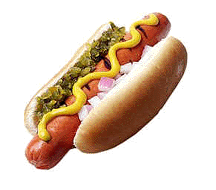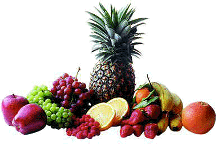Beyond the Classical Debates
The Global Food System
 In the period from 1945 to 1972, the United States dominated the global food system. US agriculture produced huge surpluses of wheat, maize and other grains, but farm incomes were kept up by a policy of price support and government purchasing of excess production. Exports were subsidized whilst protective tariffs and quotas were used to keep imports uncompetitive. The US disposed of its own farm surpluses as food aid. Europe was integrated into what could be termed an Atlantic food system by its dependence on US aid in the period of post-war reconstruction, but rapidly sought to substitute its own production for imports. European agriculture was also the beneficiary of subsidies and government purchasing of surpluses, and a degree of trade warfare developed between Europe and the USA as each bloc sought to protect its own farmers.
In the period from 1945 to 1972, the United States dominated the global food system. US agriculture produced huge surpluses of wheat, maize and other grains, but farm incomes were kept up by a policy of price support and government purchasing of excess production. Exports were subsidized whilst protective tariffs and quotas were used to keep imports uncompetitive. The US disposed of its own farm surpluses as food aid. Europe was integrated into what could be termed an Atlantic food system by its dependence on US aid in the period of post-war reconstruction, but rapidly sought to substitute its own production for imports. European agriculture was also the beneficiary of subsidies and government purchasing of surpluses, and a degree of trade warfare developed between Europe and the USA as each bloc sought to protect its own farmers.
In the Third World, food aid hit local producers and contributed to a growing import dependency. The Atlantic economies reduced their imports of traditional Third World exports as far as they could be growing substitutes, and the result was a vicious circle of falling export revenues and rising import bills. In the United States and Europe, technical progress was rapid, and agriculture became increasingly industrialized through the use of chemical inputs and machinery. Vertical concentration increased as large transnational companies took over the commanding heights of the agro-industrial complex.
 In the 1970s, the established system was thrown into crisis by the large purchases of grain made on the world market by the Soviet Union. As surpluses began to disappear, the US government sought to end supplies to the Soviets, but found itself powerless to regulate sales by transnational grain companies. The US also now found itself facing increasing competition on the world market from Third World countries that had boosted yields through the application of "Green Revolution" technologies. Despite increases in subsidies, US farmers found themselves increasingly in debt, and the Seventies saw many family-owned farms go into liquidation as the banks foreclosed.
In the 1970s, the established system was thrown into crisis by the large purchases of grain made on the world market by the Soviet Union. As surpluses began to disappear, the US government sought to end supplies to the Soviets, but found itself powerless to regulate sales by transnational grain companies. The US also now found itself facing increasing competition on the world market from Third World countries that had boosted yields through the application of "Green Revolution" technologies. Despite increases in subsidies, US farmers found themselves increasingly in debt, and the Seventies saw many family-owned farms go into liquidation as the banks foreclosed.
The balance of power had now shifted away from the big food exporters of the Atlantic food system. Europe and the USA were locked in a subsidy war as governments strove to keep their farmers in business and competitive on the world market. Japan, the world's most powerful food-importing country, embarked on a policy of investing heavily in agro-export sectors abroad, with the aim of encouraging a diversity of sources of supply to keep its own import costs down.
A new global food regime emerged in the 1980s. The Atlantic economies abandoned price supports. Income subsidies and payment for land taken out of cultivation became the major means of appeasing the "farm lobby", but the political influence of farmers was declining relative to the interests of consumers. Rural policy became increasingly focused on investment in recreational uses of the countryside. The countries of the South were forced to redouble their efforts to export food products to meet the repayments on the debts they had accumulated in the 1970s. This meant producing more of the crops demanded by affluent Northern consumers. Non-traditional exports, including exotic fruits and vegetables and organic produce, increasingly displaced production of food crops to meet the needs and pockets of poor consumers in Southern countries. Social inequality and conflict over land and other rural resources, such as forests, increased.
 US hegemony over the global agro-food system has declined, but the USA continues to shape developments on a world scale as a centre of affluent consumers, dominant player in the international financial institutions that shape debt repayment policies, and home to many of the transnational companies which shape rural economies in the South. It is not simply flowers, speciality vegetables and other "New Agricultural Commodities" that have displaced local food crops. Northern appetities for meat have promoted a considerable extension of land used for grazing cattle, and the cultivation of feedstocks for fattening animals reared in stockyards. Chemical-based agriculture has destroyed local environments, whilst the rural poor have got much poorer and nutritional standards have fallen precipitously. The only sectors of Southern agriculture to have prospered are those which supply the New Agricultural Commodities which have no US or European substitutes: most of the older export crop sectors have not expanded since trade was liberalized, and these countries' food import bills have escalated alarmingly because of the huge fall in peasant production.
US hegemony over the global agro-food system has declined, but the USA continues to shape developments on a world scale as a centre of affluent consumers, dominant player in the international financial institutions that shape debt repayment policies, and home to many of the transnational companies which shape rural economies in the South. It is not simply flowers, speciality vegetables and other "New Agricultural Commodities" that have displaced local food crops. Northern appetities for meat have promoted a considerable extension of land used for grazing cattle, and the cultivation of feedstocks for fattening animals reared in stockyards. Chemical-based agriculture has destroyed local environments, whilst the rural poor have got much poorer and nutritional standards have fallen precipitously. The only sectors of Southern agriculture to have prospered are those which supply the New Agricultural Commodities which have no US or European substitutes: most of the older export crop sectors have not expanded since trade was liberalized, and these countries' food import bills have escalated alarmingly because of the huge fall in peasant production.


 In the period from 1945 to 1972, the United States dominated the global food system. US agriculture produced huge surpluses of wheat, maize and other grains, but farm incomes were kept up by a policy of price support and government purchasing of excess production. Exports were subsidized whilst protective tariffs and quotas were used to keep imports uncompetitive. The US disposed of its own farm surpluses as food aid. Europe was integrated into what could be termed an Atlantic food system by its dependence on US aid in the period of post-war reconstruction, but rapidly sought to substitute its own production for imports. European agriculture was also the beneficiary of subsidies and government purchasing of surpluses, and a degree of trade warfare developed between Europe and the USA as each bloc sought to protect its own farmers.
In the period from 1945 to 1972, the United States dominated the global food system. US agriculture produced huge surpluses of wheat, maize and other grains, but farm incomes were kept up by a policy of price support and government purchasing of excess production. Exports were subsidized whilst protective tariffs and quotas were used to keep imports uncompetitive. The US disposed of its own farm surpluses as food aid. Europe was integrated into what could be termed an Atlantic food system by its dependence on US aid in the period of post-war reconstruction, but rapidly sought to substitute its own production for imports. European agriculture was also the beneficiary of subsidies and government purchasing of surpluses, and a degree of trade warfare developed between Europe and the USA as each bloc sought to protect its own farmers. In the 1970s, the established system was thrown into crisis by the large purchases of grain made on the world market by the Soviet Union. As surpluses began to disappear, the US government sought to end supplies to the Soviets, but found itself powerless to regulate sales by transnational grain companies. The US also now found itself facing increasing competition on the world market from Third World countries that had boosted yields through the application of "Green Revolution" technologies. Despite increases in subsidies, US farmers found themselves increasingly in debt, and the Seventies saw many family-owned farms go into liquidation as the banks foreclosed.
In the 1970s, the established system was thrown into crisis by the large purchases of grain made on the world market by the Soviet Union. As surpluses began to disappear, the US government sought to end supplies to the Soviets, but found itself powerless to regulate sales by transnational grain companies. The US also now found itself facing increasing competition on the world market from Third World countries that had boosted yields through the application of "Green Revolution" technologies. Despite increases in subsidies, US farmers found themselves increasingly in debt, and the Seventies saw many family-owned farms go into liquidation as the banks foreclosed. US hegemony over the global agro-food system has declined, but the USA continues to shape developments on a world scale as a centre of affluent consumers, dominant player in the international financial institutions that shape debt repayment policies, and home to many of the transnational companies which shape rural economies in the South. It is not simply flowers, speciality vegetables and other "New Agricultural Commodities" that have displaced local food crops. Northern appetities for meat have promoted a considerable extension of land used for grazing cattle, and the cultivation of feedstocks for fattening animals reared in stockyards. Chemical-based agriculture has destroyed local environments, whilst the rural poor have got much poorer and nutritional standards have fallen precipitously. The only sectors of Southern agriculture to have prospered are those which supply the New Agricultural Commodities which have no US or European substitutes: most of the older export crop sectors have not expanded since trade was liberalized, and these countries' food import bills have escalated alarmingly because of the huge fall in peasant production.
US hegemony over the global agro-food system has declined, but the USA continues to shape developments on a world scale as a centre of affluent consumers, dominant player in the international financial institutions that shape debt repayment policies, and home to many of the transnational companies which shape rural economies in the South. It is not simply flowers, speciality vegetables and other "New Agricultural Commodities" that have displaced local food crops. Northern appetities for meat have promoted a considerable extension of land used for grazing cattle, and the cultivation of feedstocks for fattening animals reared in stockyards. Chemical-based agriculture has destroyed local environments, whilst the rural poor have got much poorer and nutritional standards have fallen precipitously. The only sectors of Southern agriculture to have prospered are those which supply the New Agricultural Commodities which have no US or European substitutes: most of the older export crop sectors have not expanded since trade was liberalized, and these countries' food import bills have escalated alarmingly because of the huge fall in peasant production.